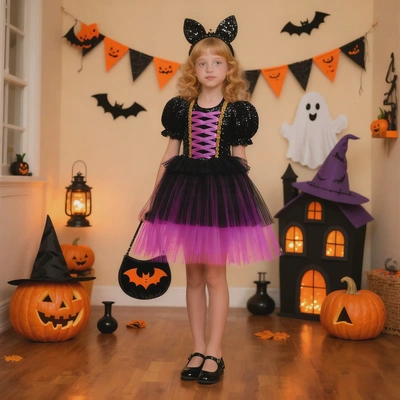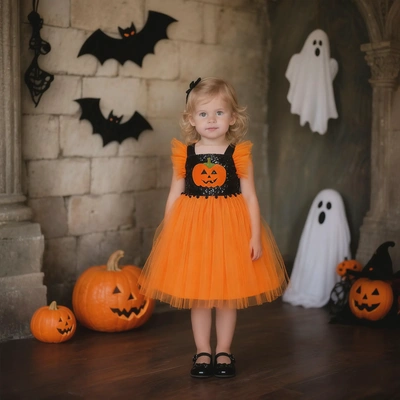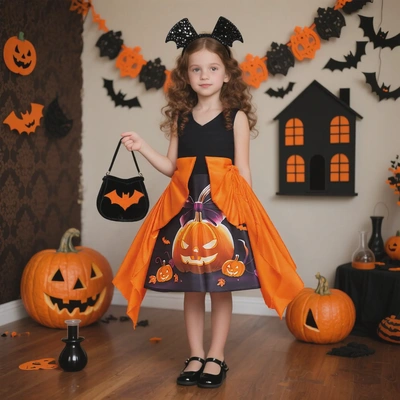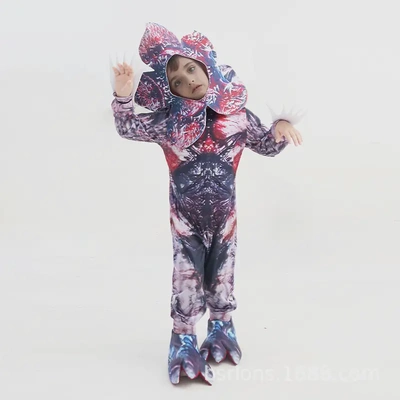Why Sensory-Safe Costumes Are the #1 Trend for 2025 (And How to Spot Them)?
It started in special education classrooms.
A child with autism would meltdown during Halloween — not from fear, but from itchy tags, tight elastics, and scratchy sequins.
Parents and teachers responded:
They created costumes without tags, with soft seams, and easy closures.
But in 2025, sensory-safe costumes aren’t just for kids with sensory sensitivities.
They’re the #1 trend in kids’ fashion — and here’s why:
Because all kids deserve comfort. And all parents want ease.
From Target to Etsy, from school plays to birthday parties, soft, simple, stress-free costumes are dominating.
In this guide, you’ll learn:
- What “sensory-safe” really means (beyond autism)
- The 5 design features of a truly sensory-friendly costume
- Why this trend is going mainstream in 2025
- How to spot authentic sensory-safe costumes (not just “greenwashed” ones)
Let’s dive into the future of kids’ wear — where comfort is the new cool.
🧠 What Does “Sensory-Safe” Mean?
A sensory-safe costume is designed to minimize discomfort for children who are sensitive to:
- Touch (itchy fabrics, tags, seams)
- Sound (crinkly materials, zippers)
- Pressure (tight waistbands, stiff boning)
- Visual input (overly bright colors, busy patterns)
But here’s the truth:
Sensory sensitivities aren’t rare. They affect 1 in 6 children, including those with:
- Autism
- ADHD
- Anxiety
- Sensory Processing Disorder (SPD)
- Even neurotypical kids during overstimulating events (like parties)
And in 2025, parents are realizing:
A costume that’s comfortable for a child with SPD is also comfortable for every child.
🌟 Why Sensory-Safe Costumes Are the #1 Trend for 2025
1. Parents Are Prioritizing Mental Wellness
Gone are the days of forcing kids into stiff, uncomfortable outfits for a photo.
Modern parents care about:
- Reducing meltdowns
- Supporting emotional regulation
- Making events joyful, not stressful
👉 Result: Demand for low-stress, high-comfort clothing is soaring.
2. Inclusivity Is No Longer Optional
Brands that ignore accessibility are being called out.
Schools, theaters, and retailers now require inclusive options.
Sensory-safe costumes = true inclusivity — not just a marketing slogan.
3. Comfort = Better Play, Better Photos
When a child isn’t tugging at their collar or scratching their neck:
- They stay in character longer
- They enjoy the moment
- They cooperate for photos
👉 Bonus: Parents get better memories — and fewer wardrobe emergencies.
4. They’re Eco-Friendly by Design
Most sensory-safe costumes use:
- Natural or ultra-soft recycled fabrics
- Minimal hardware (no plastic zippers, snaps)
- Durable construction (built to last, not fast fashion)
This aligns perfectly with the sustainable parenting movement.
✅ The 5 Must-Have Features of a Sensory-Safe Costume
Not all “soft” costumes are truly sensory-friendly.
Look for these 5 key design elements:
| Feature | ✅ Sensory-Safe | ❌ Not Sensory-Safe |
|---|---|---|
| 1. No Tags | Tagless design or printed labels | Sewn-in fabric tags |
| 2. Seamless or Flat Seams | Smooth stitching, no ridges | Raised, scratchy seams |
| 3. Soft, Stretchy Fabrics | Organic cotton, TENCEL™, recycled microfiber | Stiff polyester, vinyl, plastic-coated fabrics |
| 4. Easy Closures | Magnetic snaps, wide necklines, side zippers, elastic waists | Tight hoods, back zippers, Velcro near skin |
| 5. Minimal Sensory Triggers | No loud crinkles, no itchy embellishments, optional accessories | Glitter, sequins, stiff boning, noisy trims |
👉 Pro Tip:
If the costume feels soft to your own neck, it’s likely safe for a sensitive child.
🚫 How to Spot “Fake” Sensory-Safe Costumes
Many brands now use terms like:
- “Soft for sensitive skin”
- “Comfort fit”
- “Easy wear”
But they’re just greenwashing.
🔍 Red Flags:
- Still has internal tags
- Uses rough Velcro on the outside
- Made from standard polyester (not ultra-soft)
- No mention of sensory design principles
✅ Trust These Signs:
- “Designed with OTs” (Occupational Therapists)
- “Sensory-informed construction”
- “Tested by families of children with autism”
- “Meets ASTM sensory safety guidelines”
👕 Real-World Example: A Sensory-Safe Superhero Costume
Design Features:
- Tagless with printed care label
- Flatlock seams on shoulders and sides
- 4-way stretch organic cotton blend
- Magnetic chest snap (easy on/off)
- Wide crew neck (no pulling over head)
- Optional cape with soft loop closure (removable)
- No glitter, no noise, no itchy details
👉 Result:
A child with SPD can wear it for 3+ hours without discomfort — and still feel like a hero.
Final Thought: The Future of Kids’ Fashion Is Empathy
Sensory-safe costumes aren’t a niche.
They’re a revolution in empathy-driven design.
And in 2025, the most successful brands won’t just sell clothes.
They’ll sell:
- Confidence
- Calm
- Inclusion
- Joy
Because when a child feels comfortable in their skin — and their costume —
magic happens.
Shop Truly Sensory-Safe Costumes at [https://www.kmcoscraft.com/]
We design every costume with real families and occupational therapists.
Our SensoryKind™ Collection features:
- Tagless, seamless construction
- Ultra-soft, OEKO-TEX® certified fabrics
- Magnetic & easy-access closures
- Optional accessories (no forced glitter)
- Tested by neurodiverse families
👉 Shop the SensoryKind™ Line
Where every child — regardless of sensitivity — can dress up, play freely, and shine.





